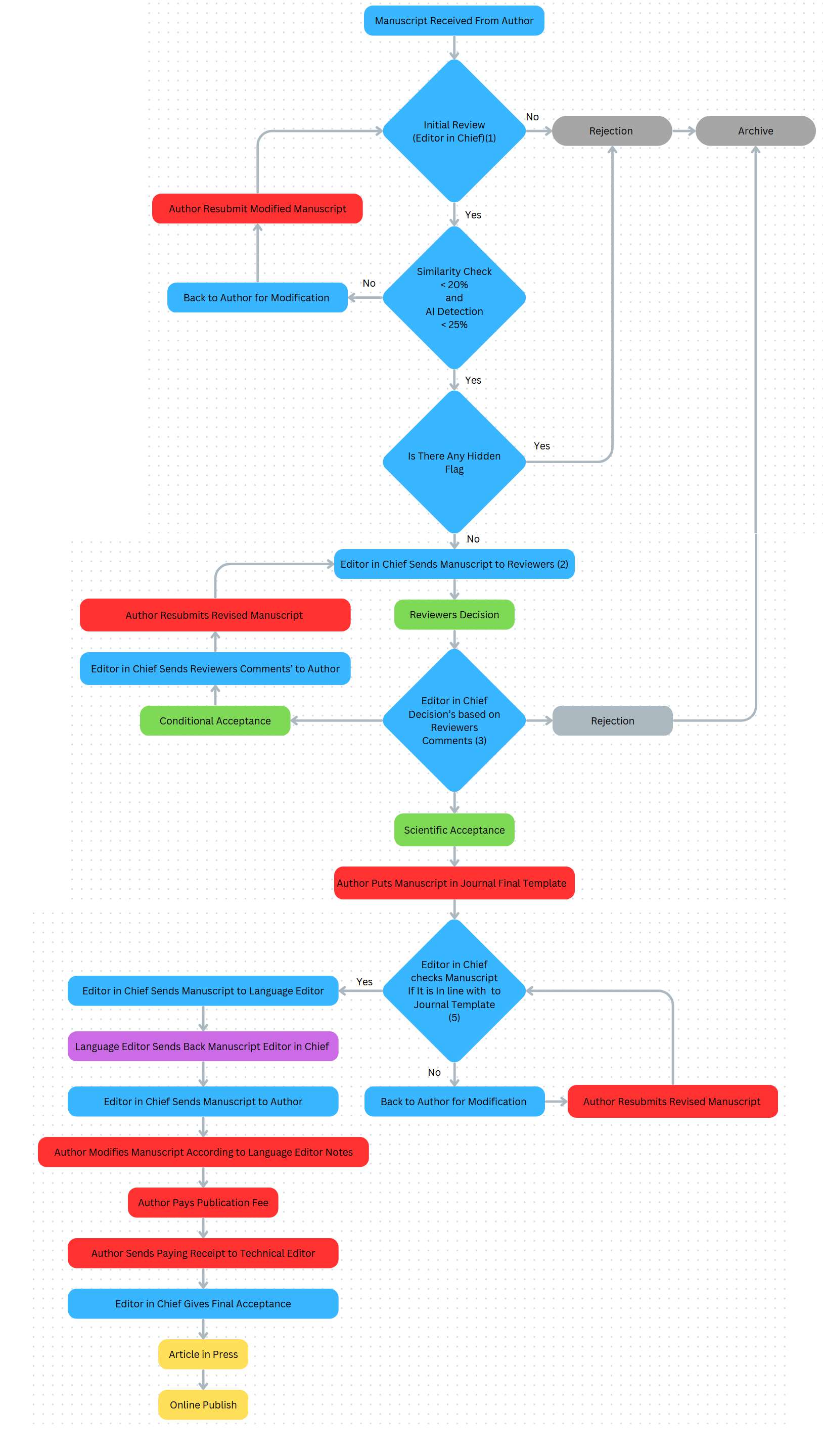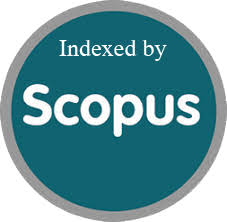Peer Review Process
Al-Rafidain Engineering Journal (AREJ) follows a confidential double-blind peer-reviewing procedure to ensure the quality of the publication.
AREJ is using “iThenticate” software to check for similarities in the submitted manuscripts before sending them to reviewers. Submission to the first decision (median) 7 days. The corresponding author will be notified within 1 to 2 months about the decisions of the reviewers.
The following steps illustrate in detail the procedure for reviewing:
- Submission of Manuscript: The corresponding author submits the manuscript to the AREJ via (https://rengj.mosuljournals.com/contacts?_action=loginForm).
- Structural Assessment: The Editorial Manager checks the structure of the submitted manuscript to ensure that the authors followed the AREJ’s guidelines.
- Editor-in-Chief Assessment and Processing: The Editor-in-Chief checks if the topic of the submitted manuscript falls within the aim and scope of the journal, if not, the submitted manuscript will be rejected, and the corresponding author will be notified about that.
- Plagiarism: The “iThenticate” software is used to detect plagiarism. If the plagiarism result is less than 20%, and the Artificial Intelligence (AI) is less than 20%, the submitted manuscript will be sent to reviewers; if not, the submitted manuscript will be rejected.
- Invitation to Reviewers: The Editor-in-Chief sends confidential invitations to reviewers who are familiar with the topic of the submitted manuscript.
- Response to Invitations: Potential reviewers consider the invitation against their own expertise, conflicts of interest, and availability. They then accept or decline.
- Review is Conducted: The reviewer sets aside time to read the article several times. The first read is used to form an initial impression of the work. If major problems are found at this stage, the reviewer may feel comfortable rejecting the article without further work. Otherwise, they will read the article several times, taking notes to build a detailed point-by-point review. The review is then submitted to the journal, with a recommendation to accept or reject it, or else with a revision request (usually flagged as either major or minor) before it is reconsidered.
- The journal evaluates the reviews: The Editor-in-Chief considers all the returned reviews before making an overall decision. If the reviews differ widely, the editor may invite an additional reviewer to get an extra opinion before making a decision.
- Primarily Decision: The Editor-in-Chief sends a decision email to the author, including any relevant reviewer comments. The reviewer's name is anonymous to the author(s).
- Author Send Revised Manuscript: The author should make the changes asked by the reviewers and should highlight these changes in red or yellow shadow.
- Final Decision: If accepted, the author should pay the publication fee, after that, the article is sent to the page designer and then to the publisher.





